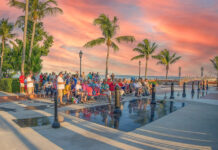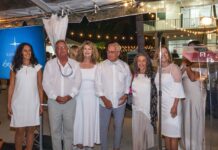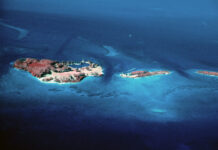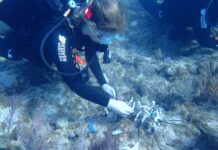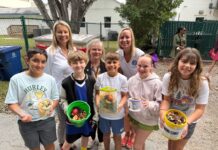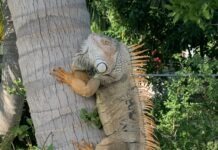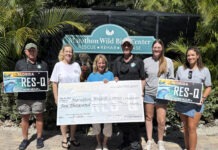By Liah Continentino
If you’ve ever strolled through a hammock trail, spotted an Atala butterfly munching on coontie or admired a gumbo limbo shining in the sun, you’ve witnessed something truly special.
The Keys host a unique plant community, with many species not seen anywhere else in the continental U.S., and some that occur nowhere else on earth. This distinctive botanical community stems from our unique geology and climate; however, due to their limited range, a great number of our native plants have been severely affected by habitat loss and are of high conservation concern.
A 2014 floristic inventory conducted at Dagny Johnson Key Largo Hammock Botanical State Park documented 417 plant species. Of these, 38 were listed as endangered and 21 were listed as threatened.
In the Keys, we receive the lowest rainfall in the state and are highly susceptible to seasonal droughts and storms. Furthermore, island soils are porous and calcareous, and freshwater resources are limited. These environmental characteristics can put a significant strain on plant life; however, local native plants are well-adapted to these conditions, displaying resilience in the face of hardships.
One way to contribute to the conservation of local botanical communities is including native plants in your landscaping. Using native plants promotes environmental stewardship and supports conservation by providing food and shelter to local wildlife such as birds, insects and other animals. Planting species of varying heights and densities is especially beneficial to wildlife.
Native plants can also mean less work and lower costs. Incorporating native plants into your landscaping can be an excellent way to reduce your water bill and save time on landscape maintenance, as they require little to no water or fertilizer after establishment. Natives can also increase environmental resilience by preventing erosion and protecting landscapes during a storm. Incorporating salt-tolerant and wind-resistant natives in coastal areas could save you from a costly remediation effort following a storm. Similarly, diverse plantings can reduce your landscape’s susceptibility to pests and disease.
Keep in mind that natives should still be planted in the right place to satisfy their specific needs to thrive. Plants should always be installed properly and cared for until established to ensure success.
There are many natives to choose from. The Atlas of Florida Plants lists more than 700 registered plant species in the Keys. Of these, 108 are listed by the Institute for Regional Conservation as “commonly cultivated in Monroe County.” Native nurseries and pop-up plant sales provide native plants from Key Largo to Key West. Even endangered plants can be cultivated in our home landscapes, as long as they are purchased from reputable nurseries. One such nursery is the Key West Botanical Garden Nursery, which cultivates endangered species as part of an Endangered Plant Advisory Council (EPAC) program.
Some of my favorite native plants include:
- Yucatan flymallow (Cienfuegosia yucatanensis): This delicate, medium-height groundcover requires little to no maintenance once established. Its elegant branches fill a bed or container beautifully and flower daily. Bright yellow flowers provide essential pollen and nectar to native pollinators.
- Blackbead (Pithecellobium keyense): This attractive species can be grown as a shrub or small tree. It is found in many of our coastal hammocks and serves as an important larval host for the cassius blue and orange giant sulfur butterflies. Its seeds are enjoyed by many native birds, including the rare white-crowned pigeon.
- Locustberry (Byrsonima lucida): This species boasts showy multicolored flower clusters and can be grown as a shrub or small tree. It is an important larval host for the Florida duskywing butterfly. Birds and other wildlife enjoy its berries in the spring.
For specific horticultural recommendations or questions, contact Liah Continentino at Continentino-liah@monroecounty-fl.gov or 305-998-9580.


